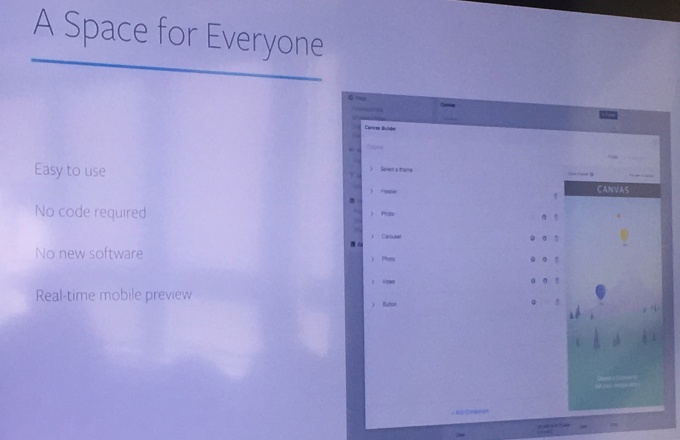Subscribe now and get the latest podcast releases delivered straight to your inbox.
 A couple of months ago, on February 25th to be exact, Facebook officially launched Canvas, a new mobile platform for all advertisers.
A couple of months ago, on February 25th to be exact, Facebook officially launched Canvas, a new mobile platform for all advertisers.
If you missed the announcement, don’t worry, because I did too!
It’s now understood and accepted that most of the time people spend online, they’re spending it on mobile and in just a handful of apps, including Facebook.
What’s remained top-of-mind for advertisers, however, is the challenge of telling a compelling brand and product story on mobile while simultaneously being effective business-wse.
Contemporary data tells us people are discovering content, brands, and products in more than ever via mobile apps, so advertisers are looking for new and creative ways to capitalize on this -- That's what makes Canvas so exciting.
Big brands like Netflix, Target, and BMW have already been experimenting with the platform, but here are three reasons why Facebook Canvas has potential to be a game-changer for mobile marketing at your organization too.
1. It's Immersive
The first thing you'll notice when you click on a Canvas ad is that you are instantly transported to an immersive, app-like brand experience. Engagement is a priority for brands in the digital space where older advertising (i.e. banner and side bar ads) is so easy to ignore.
Having a full-screen interactive canvas to showcase your brand story simply delivers that engagement in a snap.
And that snap is important. Canvas is certainly not the first immersive ad format that's been developed, but the fact that there is virtually no load time means that impatient phone users won't abandon the ad before they experience it.
2. ...But Not Intrusive
There is a fine line between immersiveness and intrusiveness. Does this experience sound familiar? You accidentally click on an ad on your phone, and you're "unintentionally" taken to some page that takes an interminable 15 seconds to load. You feel like your phone has been hijacked.
Facebook Canvas ads have a little arrow in the upper left corner that reminds you that you can simply swipe left to escape an ad. By the time your thumb crosses the screen, you are back in your Facebook feed. Painless.
Users learn behaviors like these quickly. The quick escape feature will dramatically minimize the potential intrusive nature of an immersive digital experience. People will be less hesitant to engage, because the commitment they make by clicking on an ad is so quickly reversible.
3. It's Easy to Use
Considering how professional and beautiful Canvas ads look, many are surprised to learn how easy they are to create.
Canvas is a simple, "self-serve tool, so brands and marketers can build ads with with no code required. It removes constraints that low-power mobile sites put on content and its creators.
Facebook’s Canvas design tool lets you drag-and-drop images, GIFs, videos, and then set attributes and start showing your ad. It allows interactive elements like animations, carousels, product catalogs, and tilt-to-view images, among other things.
Facebook ad exec Mark D’Arcy joked that “The only thing they can’t make, really, is excuses." There's just that many possibilities.
Facebook Canvas Success Story: L'Occitane
Content marketing is all the rage.
Brands are recognizing that in order to connect with customers, they need to create marketing users actually want to consume. The question then becomes, "What do you do with all this awesome content you've created?"
Many brands stick it on websites that their customers never visit. Other brands, with more of a focus on eCommerce, worry that content will take visitors out of their funnel.
Facebook Canvas is an answer to the question about where to put content. It's like delivering a small website right to your customer's thumb, without taking them away from what they're already doing.
Natural beauty brand, L’Occitane is reporting that it has seen a big success in its beta test of Facebook Canvas.
L’Occitane started experimenting with Canvas in December of last year, prior to the ad offering’s official release.
Within two weeks, the brand's campaign reached 2.3 million Facebook users, resulting in 11% higher ad recall compared to link ads, as well as an average of 34 seconds engagement time, according to the company. 
It stated:
Conclusion
While it's still early to determine the long-term success of Facebook Canvas, it has the potential to create a greater level of mobile engagement with consumers – and could signal a new wave of innovative storytelling.
Have you had any success using Canvas for your brand or a client? Feel free to share your experience in the comment section below.
Free Assessment:

